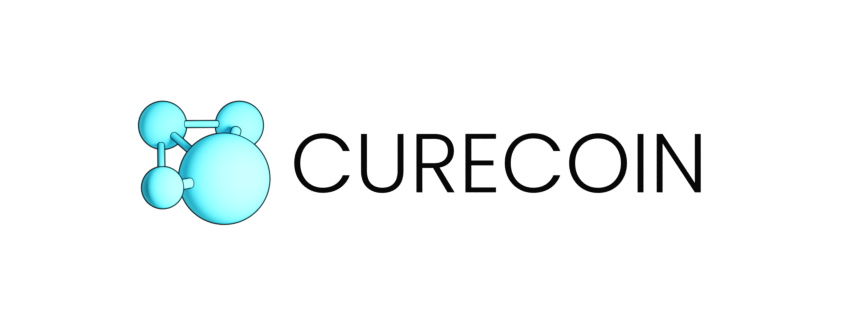This post contains part of the letter sent by the Curecoin Team to Poloniex Exchange in response to the delisting:
Curecoin is a research-based cryptocurrency that is built on top of a system with a net-positive social benefit. Curecoin’s project is to better society by rewarding members using their CPU/GPU cycles to further medical research. Curecoin currently has 6,699 total participants on the Folding@Home network. Curecoin is the largest present contributor to the Folding@Home project, significantly impacting research across numerous diseases including various cancers, Alzheimer’s, Parkinson’s, Diabetes, infectious disease and more, with recent research focusing on investigating properties of opiates and antidepressants.
See a list of the academic papers produced since Curecoin was launched.
The value of Curecoin’s donations through protein folding research to date to Stanford University’s Folding@Home project is estimated at $ 6 million (a).
The Curecoin Charity Project is a 501(c)3 non-profit, sponsored by Visions Made Viable , and frequently donates to support up to 10 charities: Assisting medical research (protein folding, childhood brain tumors, and antibiotics), US veterans and the homeless, helping fund education and medical clinics in Africa, helping disabled athletes and promoting blood donations and blood transfusion science. These charities include ANTRUK, Bonfils, and Thumbs Up International. 100% of these donated coins were earned via participation in protein folding research. Through April 2017, we have donated approximately $6,000 to these organizations, plus roughly another $9,000 to Folding@Home, bringing the approximate total donations from CureCoin to $15,000.
Curecoin has partnered with Foldingcoin (FLDC), offering more rewards to make it more profitable to fold, thus incentivizing more research. Curecoin is partnered with Coinpayments, a payment processing business allowing people to purchase items and services from up to 175,000 participating businesses using Curecoin and other altcoins.
Curecoin is one of the few cryptocurrencies that has a real chance to bring in large numbers of people from the general public into the cryptocurrency world. Huge numbers of people donate regularly to organizations fighting disease. People won’t mind throwing a little money or their idle computational resources at Curecoin when they learn that Curecoin benefits research. For an exchange such as Poloniex, Curecoin could be considered a gateway altcoin for the general public to learn about crypto. Some of those people will eventually try other altcoins as well, and this would increase Poloniex’s user base.
The CureCoin Project and CureCoin LLC have accumulated tokens (assets) to fund ongoing development. We also receive Curecoins from the community in donations. This enables us to pay for work in development, support, and outreach. The public also volunteers regularly, and we are expanding our team to include more community effort.
Development
Curecoin 2.0 will be the first cryptocurrency to implement quantum-computer-resistant cryptography (Merkle Signatures), and will feature a mini-blockchain which significantly improves scalability and will enable incredibly-lightweight wallets for smartphones. The estimated time to confirm a payment on the 2.0 release will be a few minutes.
Merkle Signatures, based on a Merkle Tree of Lamport Signatures (single-use signatures based on selectively revealing portions of a private key which correspond to the bits the signer wants to sign), allow for incredibly quick-to-verify signatures (on the order of 10s of hashes), and unlike ECDSA (used by Bitcoin) are resistant to attacks by quantum computers. Our custom implementation of Merkle Signatures has been publicly available and in testing for over two years, and relies on decades of academic research.
The mini-blockchain allows blocks older than a few weeks to be entirely pruned from the blockchain, as a balance sheet is maintained for all addresses in a memory-compact radix tree allowing for constant-time lookups and modifications, and the blockchain enforces the deterministically-produced radix tree’s current state at every block.
Curecoin 2.0 APIs will be backward compatible to the current Curecoin 1.x versions, so any re-work in implementing the new release will be minimal for Poloniex and others.
After the release of Curecoin 2.0, a new coin, SigmaX, is planned, which will use much of the same code as Curecoin 2.0, but will be mined, and therefore will not allow any individual or institution to unfairly affect mining rewards. Research universities, which issue mining certificates in Curecoin 2.0, won’t exist on the SigmaX network. SigmaX will be awarded partially to Curecoin 2.0 holders according to their balances, and this will occur for a limited time, but at least for one year.
Curecoin 1.3.x will see the addition of GPUGrid as its first step into diversifying research to multiple DCN’s, (Distributed Computing Networks) . Other DCN’s have been contacted for collaboration.
Performance
Curecoin has broken the world records for research speeds of a single research team of all research-based DCNs, (Distributed Computing Networks). Running at over 266 million points per day on the Folding at Home DCN, we’ve brought the computational power to roughly 15 PetaFlops, coming very close to the IBM Titan Supercomputer which runs at (17-19 PetaFlops).
Until the announcement by Poloniex of the de-listing recently, Curecoin registered approximately a 100% gain in price vs. Bitcoin, which itself showed over 400% gain vs. USD over the last two years. Combined, this means that Curecoin was up some 800% vs. USD over the 2 ½ year average. Additionally, the current proof-of-stake earnings add approximately 10% more per year to that.


